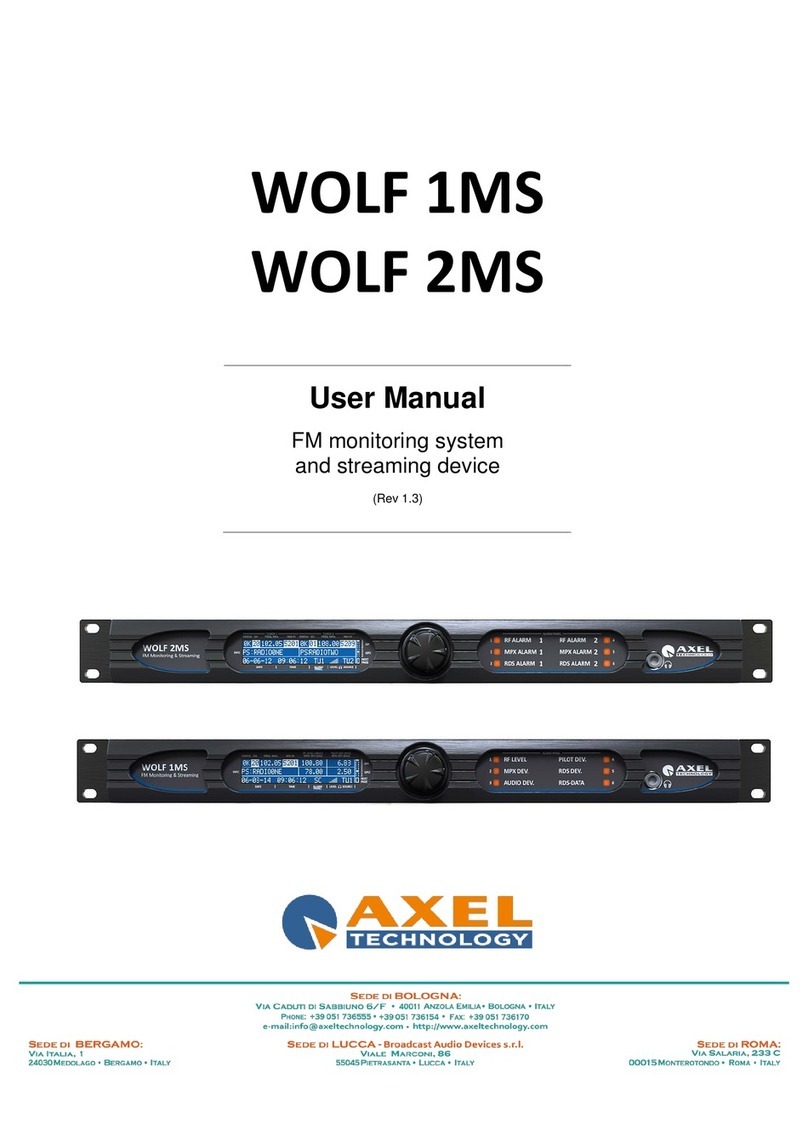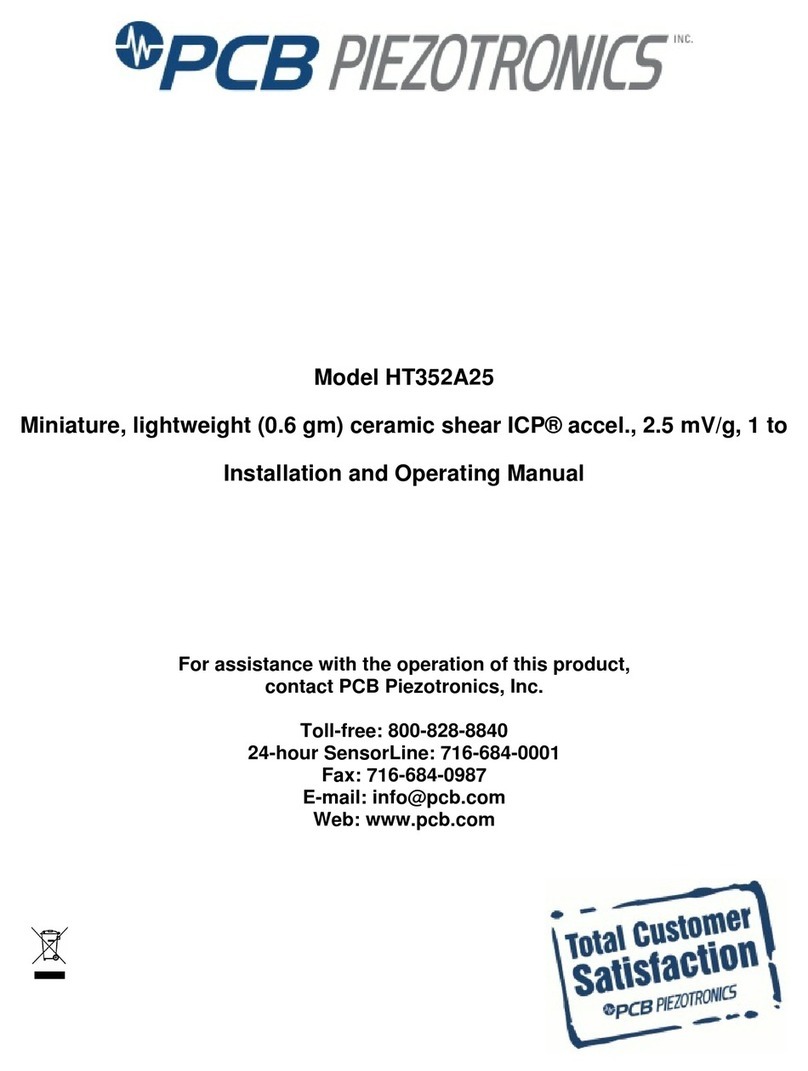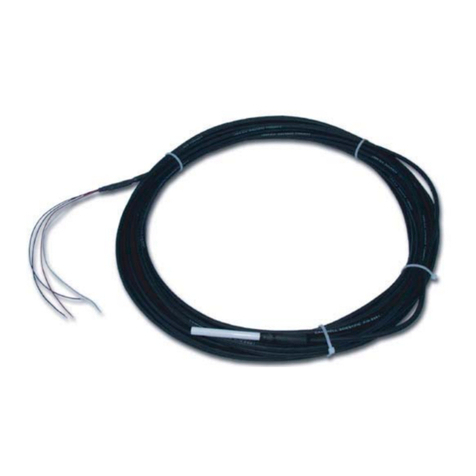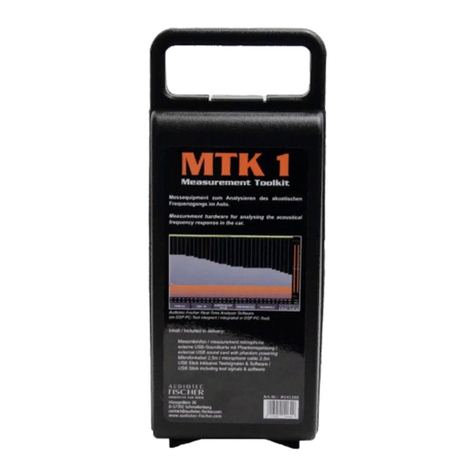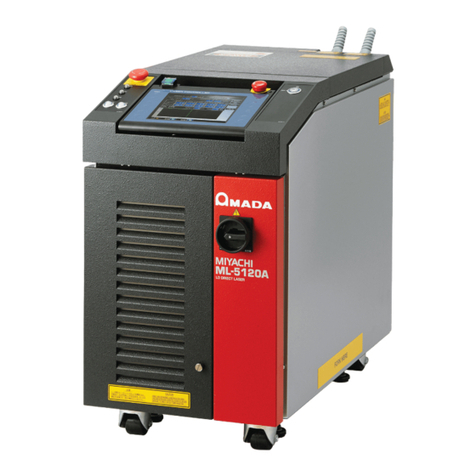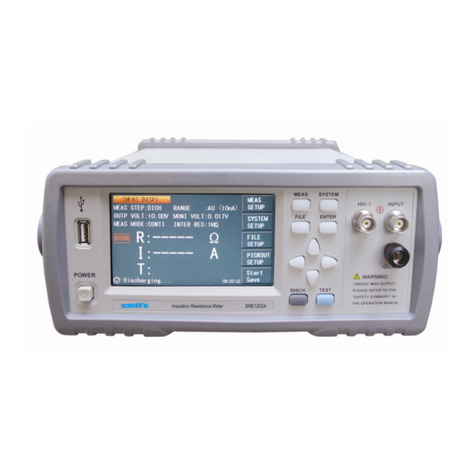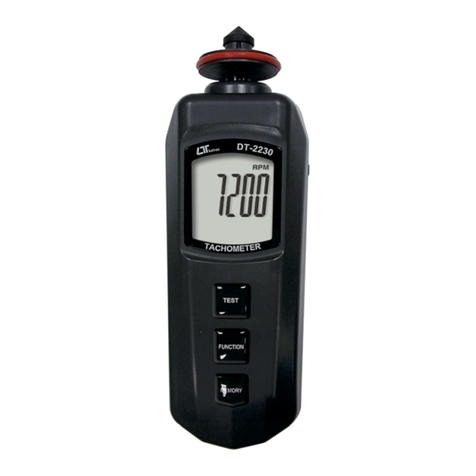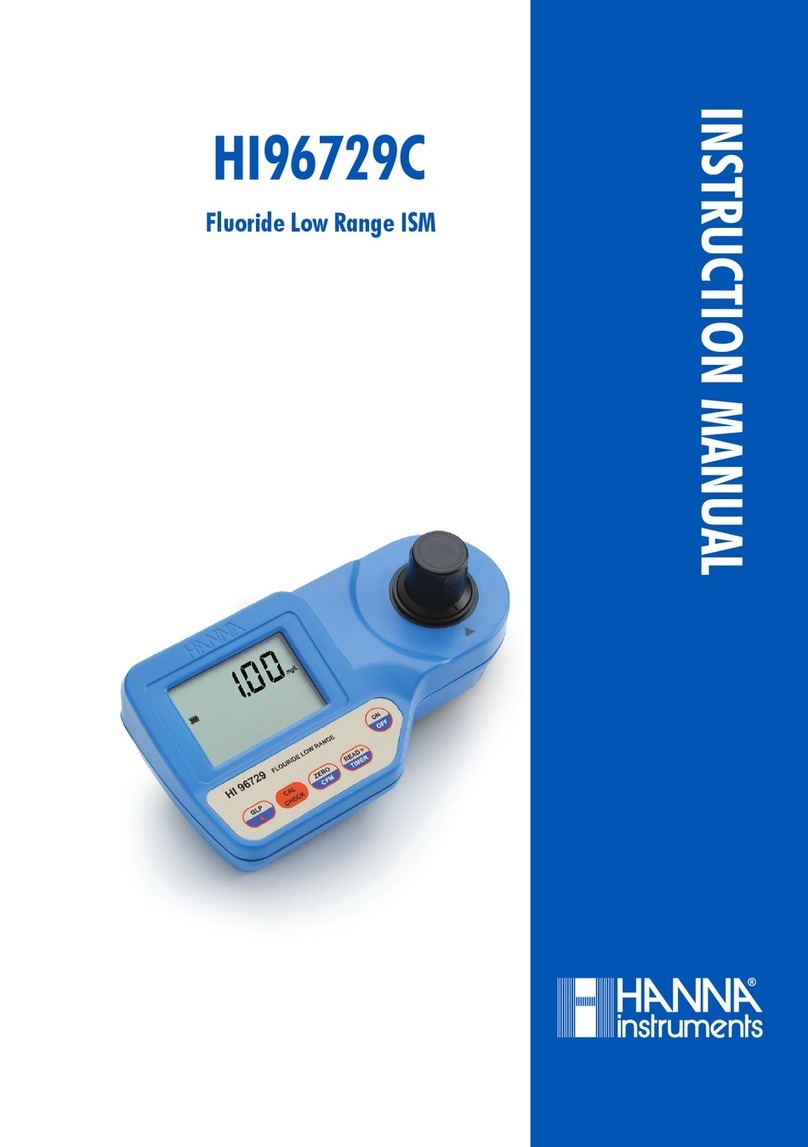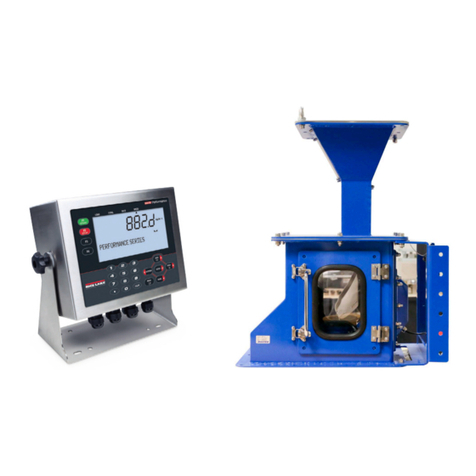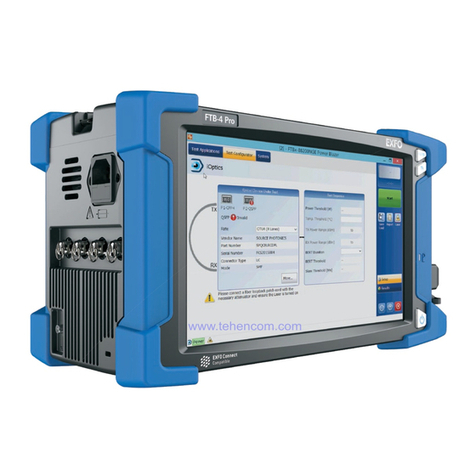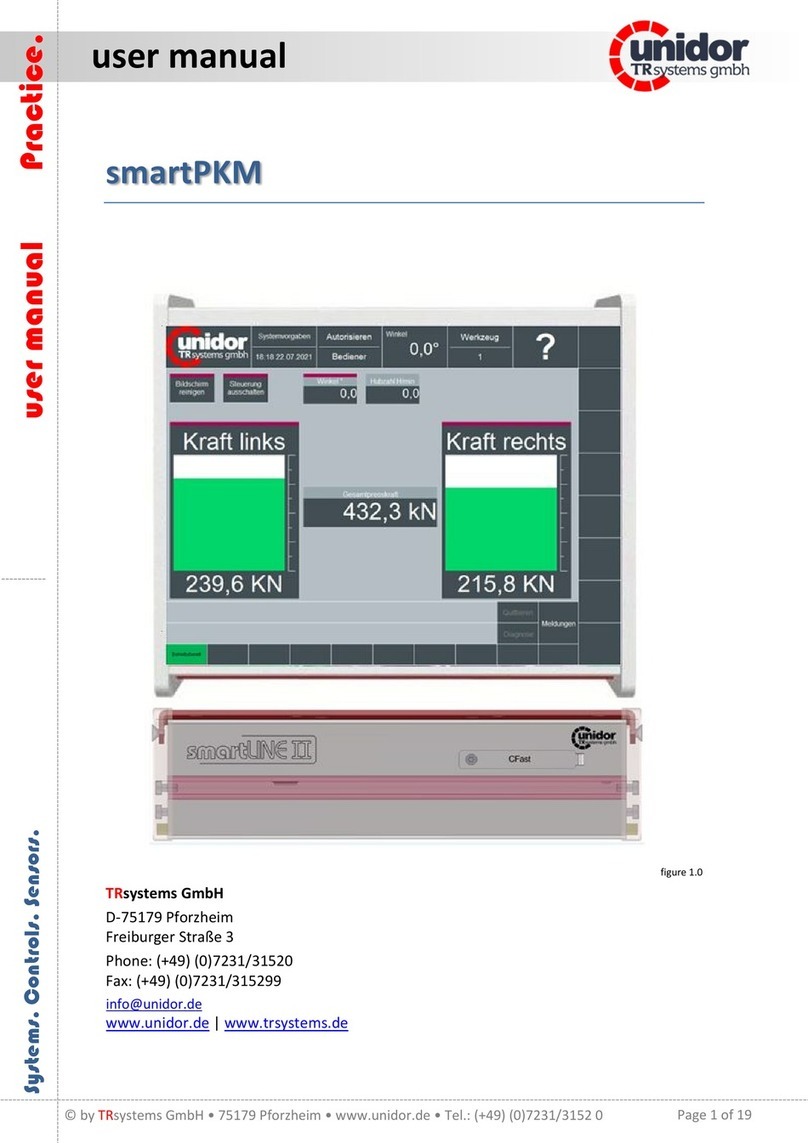ROCAMED SIRIUS User manual

Thulium Fiber Laser
User Manual
DGM001519.01
Rev. data 19/10/2021

2
DGM001519.01 UM Sirius CE/ROTW
Dear Customer,
Thank you for choosing a ROCAMED Medical Laser product.
In order to attain best results with ROCAMED Laser Systems and to avoid risks of dangerous
faults, please be sure that you carefully and completely read this user manual before starting
any operation.
Notice
No part of this manual may be reproduced or transmitted in any form or by any means without the written
consent of ROCAMED.
The information in this manual is subject to change without notice.
Disclaimer
ROCAMED provides this document in its commitment to help facilitate consistent, positive clinical outcomes,
and to reduce patient risk and injury. These guidelines are not, however, intended to in any way replace or
responsibility, or professional judgment, nor are they intended
to provide any warranty, promise, guarantee, assumption of risk or duty, release, or indemnity. Physicians shall
at all times maintain responsibility for patient treatment and outcomes, and ROCAMED further assumes no
liability for patient treatment or outcome or for ce.
ining materials, guidelines, or instructions
create an obligation for ROCAMED to perform any services. Products and services may be purchased from
ROCAMED or Distributor Certified/Trained by ROCAMED.
ROCAMED

3
DGM001519.01 UM Sirius CE/ROTW
For an optimal functioning of the equipment, and to ensure the
maximum safety of operators and patients:
Verify that the treatment room temperature does not exceed 30° C (86°F)
Keep the equipment away from walls, especially where fans are positioned, ensuring the
right ventilation
Use protective goggles, ALWAYS
Protect the patient from hazardous optical radiations
Protect any operator by using personal protection means and environment protection
barriers
chapter of this manual

4
DGM001519.01 UM Sirius CE/ROTW
TABLE OF CONTENTS
GENERAL INFORMATION ........................................................................................................................ 7
INTRODUCTION ................................................................................................................................................. 7
PURPOSE OF THE MANUAL .................................................................................................................................. 7
SAFETY INSTRUCTIONS ........................................................................................................................................ 7
SYMBOLS AND ABBREVIATIONS ............................................................................................................................ 8
MANUFACTURER ............................................................................................................................................. 10
COMBINATIONS .............................................................................................................................................. 10
LASER SAFETY ....................................................................................................................................... 11
GENERAL SAFETY ............................................................................................................................................ 11
CLASSIFICATION .............................................................................................................................................. 11
SYSTEM SAFETY FEATURES ................................................................................................................................ 11
TRAINING OF THE MEDICAL STAFF ....................................................................................................................... 11
WORKING AREA .............................................................................................................................................. 12
EYE AND SKIN EXPOSURE ................................................................................................................................... 12
Nominal Ocular Hazard Distance ....................................................................................................... 13
ENVIRONMENTAL CONDITIONS ........................................................................................................................... 13
Electrical connection requirements .................................................................................................... 14
Temperature and humidity ................................................................................................................ 14
Minimum space requirements ........................................................................................................... 14
FIRE HAZARD .................................................................................................................................................. 14
EMISSION OF PLUME ........................................................................................................................................ 14
EMISSION OF TOXIC GAS OR VAPOR ................................................................................................................... 15
SAFETY FEATURES FOR THE ELECTROMAGNETIC COMPATIBILITY (EMC) .................................................................... 15
WARNING AND INSTRUCTIONS FOR THE DEVICE DISPOSAL ...................................................................................... 15
LABELLING PLAN ............................................................................................................................................ 15
Front view ......................................................................................................................................... 17
Rear view ......................................................................................................................................... 18
Footswitch ........................................................................................................................................ 18
DEVICE DESCRIPTION ............................................................................................................................ 19
INTRODUCTION ............................................................................................................................................... 19
GENERAL DESCRIPTION OF THE DEVICE ................................................................................................................. 19
ELECTRICAL CONTROL ....................................................................................................................................... 20
Mains switch ...................................................................................................................................... 20
Key switch ........................................................................................................................................... 20
Emergency red push button ............................................................................................................... 20
Frontal Button ON/OFF ...................................................................................................................... 21
Equipotential connector ..................................................................................................................... 21
ACCESSORIES .................................................................................................................................................. 21
Optical fiber ........................................................................................................................................ 21
SYSTEM INSTALLATION ......................................................................................................................... 22
DEVICE INSTALLATION ...................................................................................................................................... 22
TRANSPORTATION ........................................................................................................................................... 22
PACKAGING.................................................................................................................................................... 22
INSPECTION .................................................................................................................................................... 22
LABELLING CHECK ............................................................................................................................................ 22
INSTALLATION PROCEDURE ................................................................................................................................ 23
Mains connection ............................................................................................................................... 24
Remote interlock connection .............................................................................................................. 24
Footswitch connections ...................................................................................................................... 25
Optical fiber connection ..................................................................................................................... 25

5
DGM001519.01 UM Sirius CE/ROTW
Optical fiber check .............................................................................................................................. 25
INSTRUCTIONS FOR USE ....................................................................................................................... 26
START-UP PROCEDURE ..................................................................................................................................... 26
OPERATING INSTRUCTIONS ................................................................................................................................ 27
Main Screen ........................................................................................................................................ 27
SETTINGS ....................................................................................................................................................... 31
Brightness ........................................................................................................................................... 31
Sound.................................................................................................................................................. 32
Language ............................................................................................................................................ 32
Database ............................................................................................................................................ 34
LASER EMISSION .............................................................................................................................................. 35
RFID fiber connection ......................................................................................................................... 35
Ready / Standby ................................................................................................................................. 35
Ready mode ........................................................................................................................................ 36
Emission ............................................................................................................................................. 36
Laser Parameters ............................................................................................................................... 37
ERROR AND WARNING DESCRIPTION .................................................................................................................... 37
SHUTDOWN PROCEDURE AND PROTECTION AGAINST UNAUTHORIZED USE ................................................................... 39
MAINS DISCONNECTION ................................................................................................................................... 39
CLINICAL APPLICATION ......................................................................................................................... 40
INTENDED USE................................................................................................................................................ 40
TREATMENT PARAMETERS AND INSTRUCTIONS...................................................................................................... 42
Treatment parameters and instructions for endoscopic procedures ............................................... 42
Treatment parameters and instructions for open surgery & laparoscopic procedures .................. 45
GENERAL LASER WARNINGS .............................................................................................................................. 46
GENERAL LASER PRECAUTIONS .......................................................................................................................... 48
Urology precautions and warnings ................................................................................................... 48
Precautions and warnings in other medical specialties ................................................................... 48
GENERAL LASER COMPLICATIONS ....................................................................................................................... 49
Complications for Urology ................................................................................................................. 50
Complications in other medical specialties ....................................................................................... 50
CONTRAINDICATIONS FOR LASER SURGERY ............................................................................................................ 51
Specific Precautions and Contraindications ....................................................................................... 51
MAINTENANCE, CLEANING AND STERILIZATION ................................................................................... 54
DEVICE CLEANING ............................................................................................................................................ 54
LASER MAINTENANCE AND TECHNICAL CHECK ....................................................................................................... 54
SAFETY LABELLING CHECK .................................................................................................................................. 54
CHECK OF THE LINE CABLE ................................................................................................................................. 54
OPTICAL FIBER MAINTENANCE ............................................................................................................................ 54
Fiber management (application cycles) ............................................................................................. 55
Check the optical fiber before operation ............................................................................................ 55
Use, cleaning, disinfection, sterilization of optical fibers ................................................................... 55
BLAST SHIELD REPLACEMENT ............................................................................................................................. 55
TROUBLESHOOTING ............................................................................................................................. 57
CUSTOMER SERVICE ............................................................................................................................. 59
MANUFACTURER WARRANTY AND RESPONSIBILITY ................................................................................................ 59
REPAIRS AND MODIFICATIONS OF THE DEVICE ...................................................................................................... 59
SERVICE DEPARTMENT CONTACTS ...................................................................................................................... 60
REPORTING OF SERIOUS INCIDENTS ..................................................................................................................... 60
TECHNICAL SPECIFICATIONS ................................................................................................................. 61
GENERAL SPECIFICATIONS ............................................................................................................................... 61
LASER SOURCE SPECIFICATIONS ........................................................................................................................ 62

6
DGM001519.01 UM Sirius CE/ROTW
ACCESSORIES ........................................................................................................................................ 62
APPENDIX A: RMA REQUEST ................................................................................................................. 63
APPENDIX B: EMC TABLES ..................................................................................................................... 64
APPENDIX C: LOGBOOK ........................................................................................................................ 68

7
DGM001519.01 UM Sirius CE/ROTW
Introduction
The Sirius is a Thulium fiber laser device emitting at a wavelength of 1940 nm, which is used by physicians as a
tool in surgical procedures.
This manual contains important information regarding the safe use of the Sirius medical device. The manual
describes the device, surgical procedures, various device inspections, routine maintenance and operator
information for the use and care of optical fibers used for the release of the laser radiation to the patient.
Practitioner using the Sirius medical device must read this manual carefully. Professional information regarding
specific surgical specialties can be found in Chapter 6, "Clinical Applications".
Like all surgical instruments, practice is necessary for a responsible and proper use. This manual should be read
and understood thoroughly before the first use of the device!
For more information regarding the installation, clinical applications, or some issues you may encounter, please
contact your distributor.
Purpose of the manual
This manual contains essential information necessary for the installation, operation and maintenance of the
Sirius medical device. The manual is intended to be used as a guide. This manual contains instructions for
operation and maintenance. These instructions were written specifically for staff who is fully trained in laser and
conventional surgery.
This manual is not used as an alternative to surgical preparation. In addition, this manual does not provide
specific technical information regarding operations of the Sirius medical device. For any information regarding
the technical assistance, please contact your distributor.
Safety instructions
The safety instructions in this manual are intended to prevent possible injuries, material damage and operational
faults. Reading carefully through this manual before operating the laser for the first time is also considered a
safe operation concerning this product.
In this manual a distinction is made between the safety instructions used to warn of possible injuries (WARNING)
and instructions warning against operational faults (CAUTION):
WARNING
Risk of injury! This instruction concerns the safety of patients, operators and other
persons, who are in the room where the laser is being operated or maintained.
In this manual the following symbol is used to warn the risk of injury from laser radiation.
CAUTION
Danger of operational fault! Failure to follow this instruction can lead to damage of the
laser system, the applicator or the laser fiber.
In this manual the following symbol is used to indicate a possible operational fault and
the damage of the laser system, which might result from it.

8
DGM001519.01 UM Sirius CE/ROTW
Symbols and Abbreviations
Symbol
Description
Read the enclosed documentation label
CE label
Symbol of applied part type (i.e. optical fiber) BF
According to standard 60601-1
Symbol indicating that the device cannot be disposed of as municipal waste, but must
be separated in accordance with the WEEE (Waste Electrical and Electronic
Equipment)
Manufacturing date
Serial Number
Medical Device Symbol
Reference Number
Manufacturer
NOHD
Nominal Ocular Hazard Distance
MPE
Maximum permissible exposure
µm
Units, micrometer
s
Units, Second
mrad
Units, milliradiant
W
Units, watt
J
Units, Joule
J/cm2
Units, Joule for centimeter square
cm
Units, centimeter
OD
Optical Density
D
Continuous laser according to EN207
L
Glasses protection degree
KV
Units, Kilovolt

9
DGM001519.01 UM Sirius CE/ROTW
A/m
Units, Ampere for metro
Vrms
Effective supply voltage
KHz
Units, Kilo Hertz
GHz
Units, Giga Hertz
WEEE
Waste Electrical and Electronic Equipment
CW
Continuous laser pulses
Vac
Volt AC
A
Units, Ampere
T
Slow blow fuse
I
Electrical Protection Class
nm
Units, Nanometre
mm
Units, millimetre
EO
Sterilization Method
Ø
diameter
SMA
Optical Fiber connector type
mW
Units, milli Watt
T on
Pulse duration laser on
T off
Pulse duration laser off
Bar
Units, Pressure
°C
Units, Celsius degree
kg
Units, Kilogram
%
Percentage
A label that indicates the key switch off
A label that indicates the key switch on
Pushing Prohibited

10
DGM001519.01 UM Sirius CE/ROTW
Manufacturer
This device is a Medical Laser classified as Class 4 according to IEC 60825-1.
Manufactured by
Quanta System S.p.A.
Via Acquedotto, 109
21017 - Samarate (VA)
ITALY
Tel.: +39 0331 376797
Fax : +39 0331 367815
www.quantasystem.com
quanta@quantasystem.com
Distributed by:
ROCAMED S.A.M.
9 Avenue Albert II
98000 MONACO
Tel. +377 97 98 42 43
www.rocamed.eu
Combinations
We recommend to use fibers distributed by Rocamed in conjunction with the Sirius Laser System.
Caution: Products may be incorrectly combined! Injury of the patient, user or damage to the product
is possible. The different products may be only applied jointly if the intended use and the relevant
technical data, such as working length, diameter, peak voltage, etc. are suitable. Follow the
instruction manuals of the products used in combination with this product.

11
DGM001519.01 UM Sirius CE/ROTW
General Safety
For the safe use of this device, it is necessary to be aware of all the safety standards.
This manual contains important information about safe use of the device.
All people working with this device must know the operation and safety instructions in this manual.
Only trained personnel with appropriate safety guidelines can work with this device.
The laser console must be closed. Only authorized personnel can open the external cover.
Only the service staff can work on the electrical section of the device.
This User Guide should be available in the operation area of the laser device.
All warning labels must always be in good condition.
Warning: Use of controls or adjustments or performance of procedures other than those
specified herein may result in hazardous radiation exposure.
Warning: To avoid the risk of electric shock, this equipment must only be connected
to a supply mains with protective earth.
Classification
This device is a Medical Laser classified as Class 4 according to IEC 60825-1.
System Safety Features
The Sirius Laser system incorporates the following safety features:
The laser will stop firing when the pressure is removed from the footswitch.
An automatic circuit breaker shuts the system off in the event of an electrical overload.
The laser device is provided with an operating room door interlock connection, which must be set up
by the hospital personnel.
The key can only be removed when the key switch is in the OFF configuration.
An on-board microprocessor continuously monitors the status of the system, and displays messages on
the video screen along with appropriate operator prompts.
Laser energy cannot be emitted from the system unless a fiber optic has been connected.
Laser will go into Ready (to fire) status when the READY button is touched.
A continuous audible tone is heard when the surgical beam is activated (i.e. foot pedal is pressed).
An Emergency Laser Stop switch is available to disable the system immediately, in the case of an
emergency situation.
Training of the medical staff
The use of the laser device is restricted only to the specialist medical staff*: these people, depending on their
experience and expertise, can make choices appropriate to achieve the desired therapeutic effects.
It is recommended that all operators and support personnel are adequately trained on laser safety standards.
*This device must only be used by adequately qualified and trained medical personnel with experience in Urology, Thoracic
and Pulmonary, ENT, Neurosurgery, Gastroenterology, Gynecology, Lithotripsy and General Surgery.

12
DGM001519.01 UM Sirius CE/ROTW
Working area
This device is a laser of Class 4 and must be used in a specific working area defined and delimited following the
international standards IEC 60825-1.
IMPORTANT!
This device is certified to be used in the operating room.
The device shall be used in a position such that the mains switch and the other controls are easily accessible.
RULES OF ACCESS TO THE RESTRICTED WORKING AREA
External staff and visitors should also:
Be guided by staff
Always wear laser goggles in the working area when the laser is switched on
Be briefed by staff on the laser, electrical hazards and other risks associated with the operation of the
laser within the working area (laser radiation, electric shock, etc.)
Admission is strictly prohibited if there is no operator in the working area.
Warning: Equipment not suitable for use in the presence of flammable mixtures.
IMPORTANT! For shipment and storage below +5°C, the cooling system must be emptied.
NOTE! To prevent damage during transport or shipment of the products we recommend using the
original packaging material.
Eye and skin exposure
The laser beam emitted by the Sirius can cause vision loss. The laser operates at different wavelengths, visible
and invisible. Any energy transmitted by the laser system entering the eye will be focused directly on the retina.
Direct absorption of laser energy by retina can result in temporary clouded vision, retinal lesion, long term
scotoma and long term photophobia.
A danger exists in any case of:
Direct laser radiation
Reflected laser radiation
Diffused laser radiation
Warning: All the personnel present in the laser working area must wear all the protective devices.
IMPORTANT
Within the range of the laser, every person must wear laser goggles.
Check the laser goggles for perfect condition before each use. The goggles must not be mechanically damaged
in any way. Before wearing goggles, make sure that the goggles are in a good condition.
Use protective goggles with the specifications shown in Chapter 10 according to the EN 207.
Always check goggles integrity and condition.
In addition, even if you wear goggles, never look directly at the laser beam.

13
DGM001519.01 UM Sirius CE/ROTW
The skin is generally able to withstand higher levels of laser radiation but can also be burned to a greater or
lesser degree depending on the duration and intensity of exposure. If necessary, wear suitable protective
clothing.
To avoid any mix-up, the laser goggles require adequate identification.
Laser goggles with a higher degree (or level) of protection (such as L3, L4, ...) or goggles featuring a broadband
filter of protection stage L2 or higher also covering wavelengths around 1940 nm could also be used.
If you suspect that you have received a damaged laser, please:
Turn off the laser;
Inform your supervisor and / or laser safety technician.
Nominal Ocular Hazard Distance
Following the Standard IEC 60825-1, the MPE (Maximum Permissible Exposure), NOHD (Nominal Ocular Hazard
Distance) and OD (Optical Density) are calculated.
oThe MPE level represents the maximum level to which an eye, or skin, can be exposed without
consequential injury, immediately or after a long time. The MPE is related to radiation wavelength,
pulse duration or exposure time, the tissue at risk and, for visible and near infrared radiation in the 400-
1400 nm range, to the size of the retinal image.
oThe NOHD is the distance at which the beam irradiance or radiant exposure equals the appropriate
corneal maximum permissible exposure.
oThe OD of the protective goggles to be worn is defined as:
OD = log10 (H0/MPE)
Where H0 is the expected unprotected eye exposure level.
Results of MPE, NOHD and OD calculations are reported in the table in section 10.2.
Please, refer to previous section 2.6 for further details concerning the protection level in googles.
Laser system has to be used in a closed area that does not allow the escape of direct, reflected or transmitted
laser radiation.
Warning: Openings inside installation area that are transparent to laser radiation must be properly
darkened.
Doors equipped with a special interlocking system have to be made of a laser non-transparent material (glass,
plastic, curtains ...) and windows have to be darkened by using appropriate laser non-transmissive systems.
Environmental conditions
Caution: The working area must be marked with the laser warning labels, so as to prevent accidental
entry into the area. All windows, mirrors, metal and other reflective objects (clocks) should be covered, so as to
avoid distortions of the laser beam. All staff in the working area should know how to turn off the laser system in
case of emergency.
The use of mobile phones is prohibited in the working area while using the device, because it could interfere with
its proper operation.
Be careful that the laser system key is in a safe place when not in use.

14
DGM001519.01 UM Sirius CE/ROTW
Electrical connection requirements
The device must be connected to the electrical system in compliance with electrical safety regulations.
The device can be supplied with a cable with different plugs (Nema, Shuko etc.) suitable with the electrical
standard requirements of the country where the laser system is going to be installed.
Warning: To avoid any risk of electric shock, this equipment must only be connected to a supply mains
with protective earth.
Temperature and humidity
Appropriate values of temperature and humidity are required for the proper device functioning. This Laser
Device has to operate in ambient condition according to the parameters in the Technical Specification Chapter.
Minimum space requirements
To ensure proper device ventilation there must be at least 50 cm of free space on both sides.
The Laser device can be easily moved from room to room. Make sure that adequate space and appropriate
electrical socket are available in the room. Place the device in such a way to have easy access when disconnecting
it.
Fire hazard
The laser radiation of this LASER device is able to melt, burn or vaporize almost all materials. The use of this
LASER device is limited to the applications specified in this manual.
Fire hazard can occur due to the nature of the laser treatment. The absorption of emitted laser energy, no matter
the duration, may raise the temperature of any material. This phenomenon is the basis of many useful medical
and surgical applications; it is also the reason why these applications often require precautions against the risk
of igniting combustible materials in and around the treatment area.
When this LASER device is used, the following precautions should be taken:
Do not use any flammable substance, such as alcohol or acetone, in the preparation of the skin for treatment.
Use soap and water if necessary.
Anaesthetics administered either by inhalation or topically must be approved as non-flammable.
Use particular care in the use of oxygen, do not use the laser device in oxygen rich environment, as it may
lead to explosion.
Avoid using combustible materials, such as gauze and drapes, in the treatment area. When required, these
materials must be made fire-retardant by keeping them moist with water. Clothing should be kept away from
the treatment area.
Cotton wool and similar materials, when saturated with oxygen, can catch fire due to the high temperature
emitted by laser.
Before using the laser, let solvents, glues or flammable solutions evaporate if they are used to clean or
disinfect.
Attention: endogenous gases can catch fire or explode.
Emission of plume
Vapor/smoke plume
There is considerable concern about the biological plume created by electrocautery units, bonesaws and lasers.
Current medical literature recommends that a smoke evacuator and in-line filter can be used to capture this
plume. The plume should be regarded as a source of active biological material and possibly carcinogenic.
Warning: Laser plume may contain viable tissue particles.

15
DGM001519.01 UM Sirius CE/ROTW
Emission of toxic gas or vapor
The radiation of this LASER device is able to melt, burn or vaporize almost all materials. Vapors or emitted gases
resulting from laser operation may be dangerous to both patient and medical personnel in the surgical area.
The use of this LASER device is limited to the applications specified in this manual.
Safety features for the electromagnetic compatibility (EMC)
The Sirius device does not include any type of direct connection with other external devices.
The Sirius device can be disturbed by the interference with external electromagnetic fields generated by other
electrical devices installed near it.
Warning: Turn off mobile phones and similar devices while operating the device.
This Sirius device must be installed and used according to EMC information described in the tables reported in
Appendix B.
Warning and instructions for the device disposal
At the end of its lifetime, the device has to be handled according to the National or Local regulations for the
disposal of waste electrical and electronic equipment.
The device is subject to national standards which regulates the disposal of waste such as electrical equipment.
It is forbidden to dispose of the device as municipal waste, instead it has to be collected separately according to
the WEEE Directive (Waste Electrical and Electronic Equipment).
The penalties for violating law requirements are severe.
Labelling plan
Label 1
Laser characteristics
Label 2
Footswitch connector label
Label 3
Emergency laser off label according to
IEC 60601-2-22
Label 4
ON and OFF label

16
DGM001519.01 UM Sirius CE/ROTW
Label 5
Warning label of laser radiation
Label 6
Laser aperture label
Label 7
Optical fibre applicator label
Label 8
Applied part (i.e. optical fiber) type BF
label
Label 9
Rating label
Label 10
High Voltage warning label
Label 11
Warning label hazard label according
to IEC 60825-1
Label 12
Read instructions for use label
Label 13
Remote interlock connector label
Label 14
Equipotential connector label

17
DGM001519.01 UM Sirius CE/ROTW
Label 15
Circuit breaker ON(I)/OFF(0)
Label 16
Frontal button ON/OFF label
Label 17
UDI label
Label 18
Label 19
Front view
I
0
2
5
6
8
12
16
7
Ready/Standby
Prêt/En attente
3

18
DGM001519.01 UM Sirius CE/ROTW
Rear view
Footswitch
9
1
11
13
10
4
12
14
15
17
18
19

19
DGM001519.01 UM Sirius CE/ROTW
This chapter provides a general description of the device and all its parts.
Introduction
Sirius Laser System is a Thulium fiber laser device. Its wavelength is 1940 nm, in the infrared portion of the EM
spectrum. The maximum output power of the device is 60 W. For the release of laser radiation to the patient,
the Sirius medical device uses a quartz optical fiber with a diameter up to 1000 (see Chapter 11 "Accessories")
to be used for the surgical applications mentioned in Chapter 6, "Clinical Applications". In addition to the optical
fiber launch system, this laser system has power and control electronics. For all technical information relating
to the laser system and electrical system, contact the company QUANTA SYSTEM.
The laser can operate in a pulsed mode with maximum frequency of 2500 Hz. In this case, the release is by pulses
that are repeated over time with an adjustable frequency (see Chapter 5 .
Sirius is used in different clinical application (see Chapter 6 'Clinical Applications').
General description of the device
1
Touch screen Display (control panel)
7
External protection shutter
2
Emergency red push button
8
Frontal Button ON/OFF
3
Footswitch connector
9
Handle
4
Optical fiber connector (WARNING: this is a laser aperture)
10
USB port for Service (only for Service personnel)
5
RFID Antenna
11
Blast Shield access
6
Led indicator
12
Air exhaust
2
3
4
5
1
7
6
9
Warning: USB port is accessible to service personnel only.
12
11
8
10

20
DGM001519.01 UM Sirius CE/ROTW
1
Interlock connector
2
Power/mains switch
3
Power cable socket
4
Support for footswitch and power cord
5
Key switch
6
Equipotential connector
Electrical control
Mains switch
When the main switch is set in I configuration the device is power supplied.
In case you must disconnect the device from mains, turn the main switch to the O configuration and disconnect
the power supply plug.
Key switch
The key switch turns on/off the device. There are two configurations on the switch: and .
To switch the device ON, insert the key and turn it clockwise - configuration. To switch the device OFF, turn
the key counter clockwise - configuration and remove the key.
Emergency red push button
The emergency red push button is designed for emergencies or when the operator must immediately turn off
the device. To switch the device off immediately, press this button. To reset the emergency red push button,
turn the knob.
6
1
4
3
2
5
Table of contents


